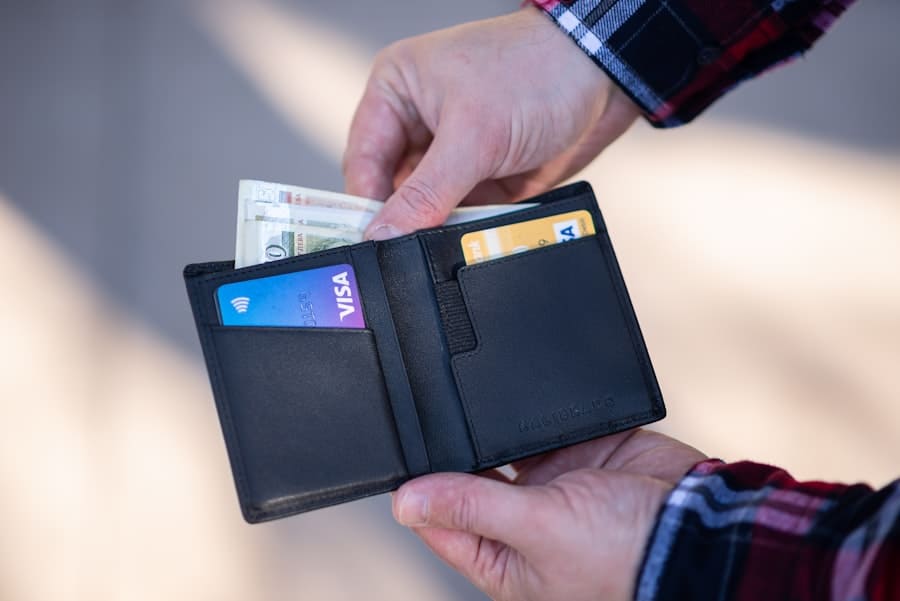The financial technology sector, commonly referred to as FinTech, has experienced a meteoric rise over the past decade, fundamentally altering the landscape of the financial industry. This transformation is driven by a confluence of technological advancements, changing consumer behaviors, and the increasing demand for more efficient and accessible financial services. FinTech encompasses a broad range of applications, from mobile banking and peer-to-peer lending to robo-advisors and blockchain technology.
The proliferation of smartphones and internet connectivity has empowered consumers to manage their finances with unprecedented ease, leading to a surge in the adoption of digital financial solutions. Moreover, the COVID-19 pandemic accelerated this trend, as lockdowns and social distancing measures forced consumers and businesses alike to seek digital alternatives to traditional banking services. FinTech companies have capitalized on this shift by offering innovative solutions that cater to the evolving needs of consumers.
For instance, platforms like Square and PayPal have revolutionized payment processing, enabling small businesses to accept digital payments seamlessly. Additionally, the rise of neobanks—fully digital banks without physical branches—has provided consumers with a fresh alternative to traditional banking institutions, often with lower fees and enhanced user experiences.
Key Takeaways
- FinTech has revolutionized the financial industry by offering innovative solutions and services.
- Traditional banking has limitations such as high fees, slow transaction times, and limited accessibility.
- Cryptocurrencies have emerged as a disruptive force in the financial landscape, offering decentralized and secure transactions.
- FinTech plays a crucial role in integrating cryptocurrencies into traditional banking, offering new opportunities for customers and businesses.
- Using FinTech for cryptocurrency transactions has advantages such as lower fees and faster transactions, but also disadvantages such as security risks and regulatory challenges.
Understanding Traditional Banking and its Limitations
Traditional banking has long been characterized by its reliance on physical branches, face-to-face interactions, and a rigid structure that often prioritizes institutional needs over customer preferences. While these banks have served as the backbone of the financial system for centuries, they are increasingly viewed as cumbersome and slow to adapt to the rapid changes in consumer expectations. One of the most significant limitations of traditional banking is its lack of accessibility; many individuals, particularly in underserved communities, face barriers to entry due to stringent requirements for opening accounts or obtaining loans.
Additionally, traditional banks often operate within a framework that emphasizes risk aversion, leading to lengthy approval processes for loans and credit applications. This can be particularly frustrating for small business owners or individuals with non-traditional income sources who may struggle to secure financing. Furthermore, the high fees associated with maintaining accounts or conducting transactions can deter customers from fully engaging with their banks.
As a result, many consumers are left feeling disillusioned with their banking experiences, prompting them to seek alternatives that offer greater flexibility and convenience.
The Emergence of Cryptocurrencies and their Impact on the Financial Landscape
The advent of cryptocurrencies has introduced a new paradigm in the financial landscape, challenging conventional notions of currency and value transfer. Bitcoin, launched in 2009, was the first decentralized cryptocurrency and remains the most recognized. Its underlying technology, blockchain, enables secure and transparent transactions without the need for intermediaries like banks.
This innovation has not only democratized access to financial services but has also sparked a broader conversation about the future of money itself. Cryptocurrencies have gained traction for various reasons, including their potential for high returns on investment and their appeal as a hedge against inflation. The decentralized nature of cryptocurrencies allows users to maintain control over their assets without relying on traditional financial institutions.
This has led to a growing interest among investors and consumers alike, with thousands of cryptocurrencies now available on various exchanges.
The Role of FinTech in Integrating Cryptocurrencies into Traditional Banking
FinTech companies are playing a pivotal role in bridging the gap between cryptocurrencies and traditional banking systems. By developing platforms that facilitate cryptocurrency transactions, these companies are enabling users to buy, sell, and store digital assets with ease. For instance, platforms like Coinbase and Binance have emerged as leading exchanges that allow users to trade cryptocurrencies while providing educational resources to help newcomers navigate this complex space.
These platforms often integrate user-friendly interfaces and robust security measures to enhance the overall experience. Moreover, some traditional banks are beginning to recognize the potential of cryptocurrencies and are exploring ways to incorporate them into their offerings. For example, several banks have started providing custodial services for digital assets, allowing clients to securely store their cryptocurrencies alongside traditional investments.
Additionally, FinTech innovations such as blockchain-based payment systems are being adopted by banks to streamline cross-border transactions, reduce costs, and improve transaction speeds. This integration signifies a shift towards a more inclusive financial ecosystem where digital currencies coexist with traditional fiat currencies.
Advantages and Disadvantages of Using FinTech for Cryptocurrency Transactions
Utilizing FinTech for cryptocurrency transactions presents several advantages that appeal to both individual users and businesses. One of the most significant benefits is the speed at which transactions can be executed. Traditional banking systems often involve lengthy processing times for transfers or payments; however, FinTech platforms can facilitate near-instantaneous transactions through blockchain technology.
This efficiency is particularly advantageous for businesses that require quick access to funds or need to make time-sensitive payments. On the other hand, there are notable disadvantages associated with using FinTech for cryptocurrency transactions. Security remains a paramount concern; while many platforms implement robust security measures, they are not immune to hacking attempts or data breaches.
Users must remain vigilant about safeguarding their private keys and personal information. Additionally, the volatility of cryptocurrencies can pose risks for those engaging in trading or investment activities. Sudden price fluctuations can lead to significant losses if users are not adequately prepared or informed about market dynamics.
Regulatory Challenges and Compliance Issues in FinTech and Cryptocurrencies
Regulatory Challenges and Compliance Burdens
In response to the risks associated with FinTech and cryptocurrencies, regulatory bodies have implemented measures to prevent money laundering and protect consumers from fraud. For example, the Financial Action Task Force (FATF) has issued guidelines requiring cryptocurrency exchanges to adhere to Know Your Customer (KYC) regulations. However, these regulations can also stifle innovation by imposing burdensome compliance requirements on startups and smaller companies within the FinTech space.
Uncertainty and International Operations
The lack of clear regulatory guidance creates uncertainty for businesses looking to enter the market or expand their offerings. Furthermore, differing regulations across countries complicate international operations for FinTech firms that wish to provide services globally.
Striking a Balance for Sustainable Growth
As regulators continue to adapt to this evolving landscape, finding a balance between consumer protection and fostering innovation will be crucial for the sustainable growth of both FinTech and cryptocurrencies.
The Future of FinTech and Cryptocurrencies in the Banking Sector
Looking ahead, the future of FinTech and cryptocurrencies within the banking sector appears promising yet fraught with challenges. As consumer preferences continue to shift towards digital solutions, traditional banks will likely need to adapt by embracing technological innovations or risk losing market share to agile FinTech competitors. This could lead to increased collaboration between banks and FinTech firms as they seek to leverage each other’s strengths—banks providing stability and trust while FinTech companies offer agility and innovation.
Moreover, as cryptocurrencies gain wider acceptance among consumers and businesses alike, we may see an increasing number of banks integrating digital assets into their services. This could manifest in various forms, such as offering cryptocurrency investment products or facilitating crypto-backed loans. However, this integration will require careful navigation of regulatory landscapes and consumer education efforts to ensure that users understand the risks associated with digital currencies.
Tips for Safely Navigating the Intersection of FinTech, Traditional Banking, and Cryptocurrencies
As individuals seek to navigate the intersection of FinTech, traditional banking, and cryptocurrencies, several best practices can enhance their safety and security in this complex environment. First and foremost, it is essential to conduct thorough research before engaging with any FinTech platform or cryptocurrency exchange. Users should verify the legitimacy of platforms by checking for regulatory compliance, reading user reviews, and understanding their security protocols.
This includes using hardware wallets for storing digital assets offline, enabling two-factor authentication on accounts, and being cautious about sharing personal information online. Users should also stay informed about market trends and developments within both FinTech and cryptocurrency sectors to make educated decisions regarding their investments or transactions.
By adopting these practices and remaining vigilant in an ever-evolving landscape, individuals can better navigate the complexities of integrating FinTech solutions with traditional banking services while exploring the opportunities presented by cryptocurrencies.
In a recent article on the best software for UX, the importance of user experience in the world of technology is highlighted. Just like how FinTech is revolutionizing the way we interact with traditional banking and cryptocurrencies, user experience plays a crucial role in ensuring that these innovations are accessible and easy to use for consumers. By focusing on creating intuitive and user-friendly interfaces, FinTech companies can bridge the gap between traditional banking and cryptocurrencies even further, making financial services more inclusive and convenient for all.
FAQs
What is FinTech?
FinTech, short for financial technology, refers to the use of technology to provide financial services. This can include anything from mobile banking apps to cryptocurrency platforms.
What are traditional banking services?
Traditional banking services refer to the services provided by established financial institutions such as banks and credit unions. These services include savings accounts, loans, and investment products.
What are cryptocurrencies?
Cryptocurrencies are digital or virtual currencies that use cryptography for security and operate independently of a central bank. Bitcoin and Ethereum are examples of popular cryptocurrencies.
How does FinTech bridge the gap between traditional banking and cryptocurrencies?
FinTech companies create platforms and services that allow users to access both traditional banking services and cryptocurrencies in one place. This can include digital wallets that hold both fiat currency and cryptocurrencies, as well as platforms for buying and selling cryptocurrencies.
What are the benefits of FinTech in bridging the gap between traditional banking and cryptocurrencies?
FinTech makes it easier for individuals to access and manage both traditional and digital assets in one place. It also provides greater convenience and accessibility for users who want to engage in both traditional and digital financial transactions.
Are there any risks associated with using FinTech for traditional banking and cryptocurrencies?
As with any financial service, there are risks associated with using FinTech platforms for traditional banking and cryptocurrencies. These can include security risks, regulatory risks, and the potential for financial loss. It’s important for users to research and understand the risks before using these platforms.



